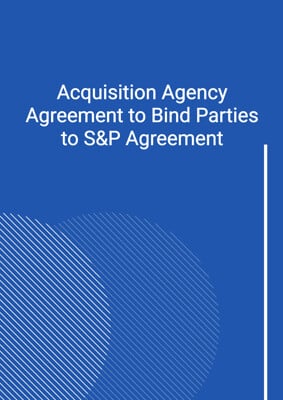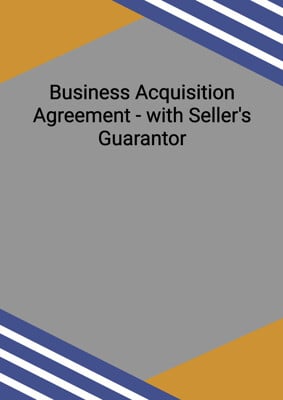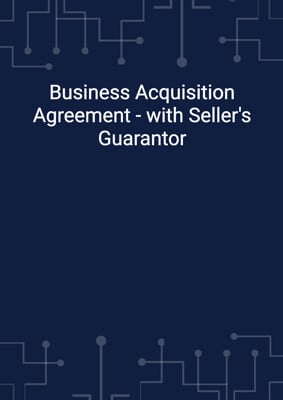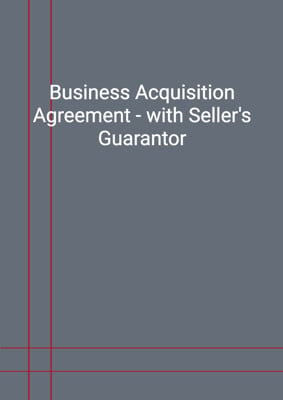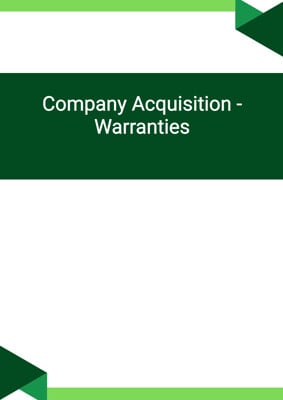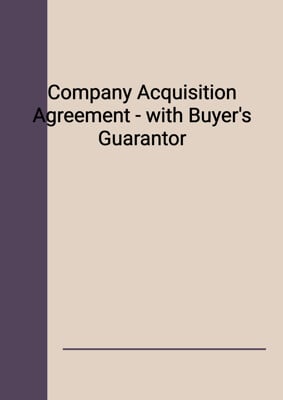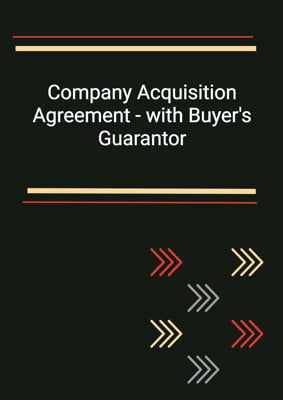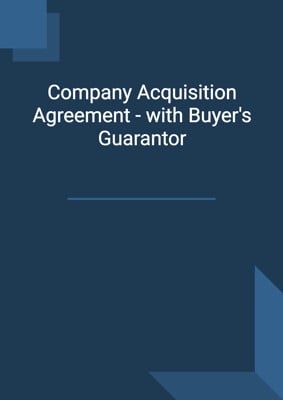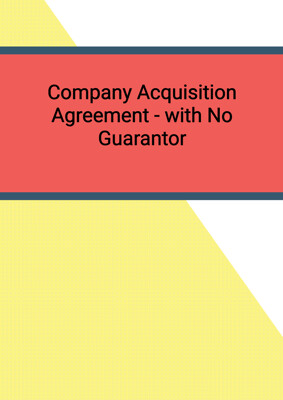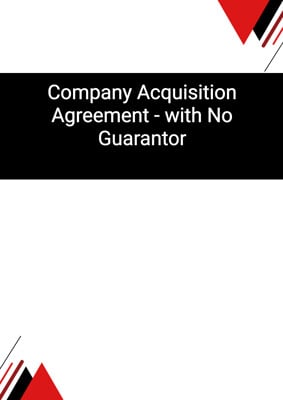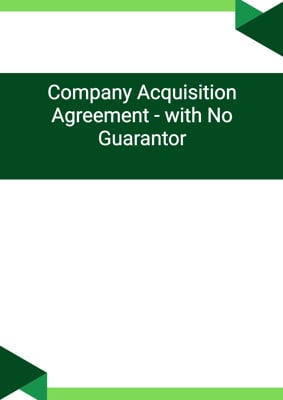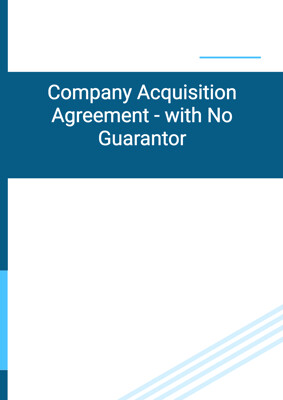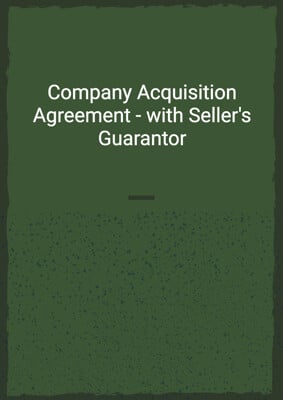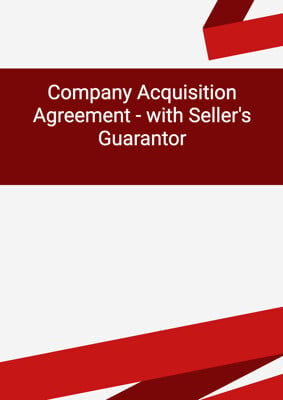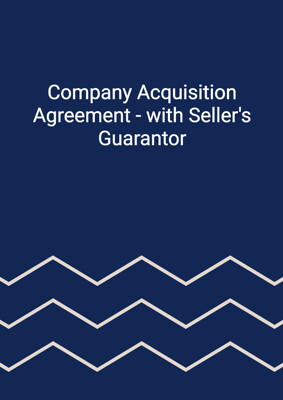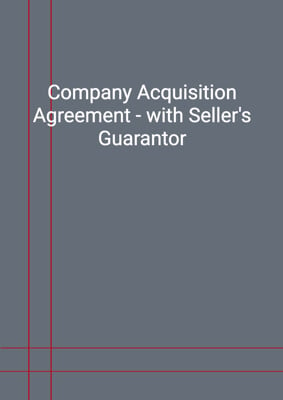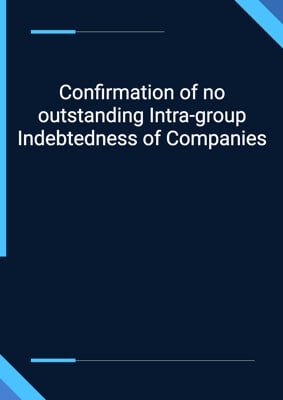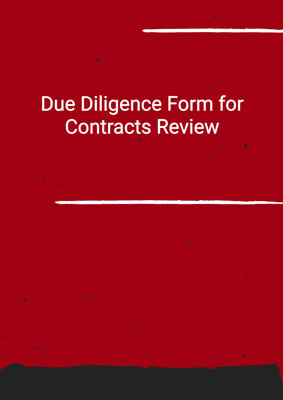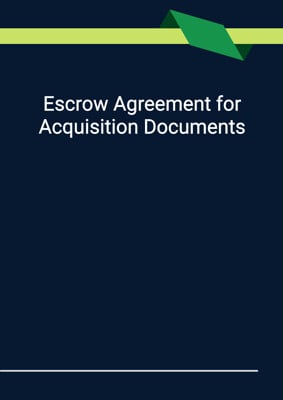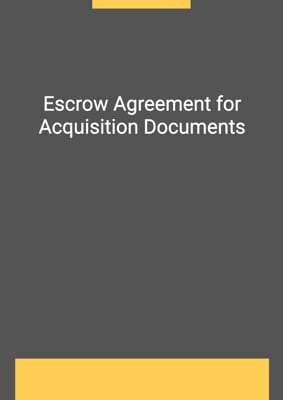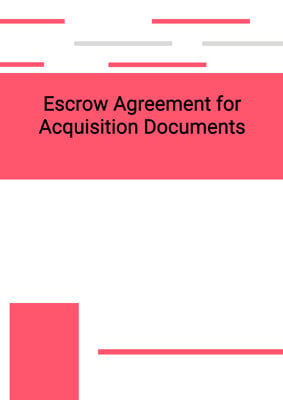How to Tailor the Document for Your Need?
01
Create Document
Fill in the details of the parties. You can click the "Fill with Member’s Information" button to complete it with information saved to your account.
02
Fill Information
Please fill in any additional information by following the step-by-step guide on the left hand side of the preview document and click the "Next" button.
03
Get Document
When you are done, click the "Get Document" button and you can download the document in Word or PDF format.
04
Review Document
Please get all parties to review the document carefully and make any final modifications to ensure that the details are correct before signing the document.
Document Preview
Document Description
The document titled 'Business Acquisition - Warranties' is a comprehensive agreement that outlines the warranties and disclosures provided by the seller to the buyer during the acquisition of a business. This document is of utmost importance as it ensures that both parties have a clear understanding of the information and commitments related to the business being acquired.
The document is divided into two parts: Part A - General and Part B - Property Warranties. Part A covers various aspects of the business acquisition, including information provided by the seller, disclosure requirements, authorizations, financial matters, regulatory matters, business assets, contractual matters, litigation and investigations, defective products, environmental matters, employees, and insolvency. Part B, if applicable, provides specific warranties related to the properties involved in the acquisition.
In Part A, the document begins with a section on information provided by the seller. This section ensures that all information provided by the seller during the negotiation and preparation of the agreement is true, accurate, and not misleading. It includes exhibits such as accounts, corporate documents, licenses, employee details, insurances, material contracts, list of properties, details of cash and indebtedness, pension scheme, intellectual property rights, grants, assets, and any other specific information on which the buyer is relying.
The next section in Part A covers disclosure requirements. It states that all necessary facts and matters that qualify the statements in the document are included in the disclosure letter. The information in the disclosure letter should be true, accurate, and not misleading. It also ensures that there are no other facts or matters that might have a material adverse effect on the financial or trading position or prospects of the business.
The document then addresses authorizations, stating that the seller has obtained all necessary corporate authorizations and other consents required to enter into and perform the obligations under the agreement. If there are any subsidiaries involved, their ownership and information are also addressed.
The financial matters section covers the accounts and management accounts of the business. It ensures that the accounts give a true and fair view of the state of affairs of the seller and its subsidiaries (if applicable) and comply with relevant laws and accounting principles. It also covers the position since the accounts date, stating that there have been no material adverse changes in the financial or trading position or prospects of the business.
The document then addresses the accounting and other records, stating that the seller's statutory books, books of account, and other records relating to the business are up-to-date and maintained in accordance with applicable laws and accounting practices.
Next, the document covers the debt position, stating that there are no outstanding debts owed to the business except for specified intra-group indebtedness or trade debts incurred in the ordinary course of business. It also ensures that the seller does not have any outstanding borrowing or indebtedness in relation to the business, except for specified intra-group indebtedness or borrowing from third parties.
The regulatory matters section, if applicable, covers licenses and compliance with laws. It ensures that the seller has obtained all necessary licenses, permissions, authorizations, and consents required for carrying on the business effectively. It also states that the seller has conducted the business in accordance with all applicable laws and regulations.
The business assets section covers ownership, possession, third-party facilities, adequacy, condition, equipment register, stocks, and cash. It ensures that the assets of the business are owned by the seller and not subject to any security interests or other encumbrances. It also ensures that the assets are in good condition, adequate for the business's needs, and properly recorded.
The intellectual property rights section covers registered rights, charges, infringement, employee claims, intellectual property licenses, loss of rights, and confidential information. It ensures that the seller owns or has the right to use the intellectual property rights related to the business and that there are no infringements or disputes regarding these rights.
The contractual matters section covers material contracts, defaults, and trading relationships. It ensures that all material contracts related to the business are listed and that there are no defaults or disputes regarding these contracts. It also ensures that the relationships with customers and suppliers are stable and not likely to be affected by the acquisition.
The litigation and investigations section ensures that there are no ongoing or pending litigation, arbitration, administrative proceedings, or investigations involving the seller or the business. It also ensures that there are no defective products or liabilities arising from breaches of environmental and health and safety laws.
The employees section covers employees, agreements, compliance, disputes, incentive schemes, and the effect of the acquisition on employees. It ensures that all necessary information about employees and their agreements is provided and that the seller has complied with all relevant employment laws and regulations.
The insolvency section ensures that there are no orders, petitions, meetings, or legal proceedings related to the winding up or administration of the seller or any subsidiaries. It also ensures that there are no distress, charging orders, or other processes levied against the assets of the business.
If applicable, Part B of the document provides specific warranties related to the properties involved in the acquisition. These warranties may vary depending on the jurisdiction and should be reviewed by a local property expert.
Overall, this document provides a detailed and comprehensive overview of the warranties and disclosures related to the business acquisition, ensuring that both parties have a clear understanding of the information and commitments involved.
How to use this document?
To use this document effectively, follow the step-by-step guidance below:
1. Review the entire document: Read through the entire document to familiarize yourself with its contents and understand the importance of each section.
2. Gather necessary information: Collect all the required information and documents mentioned in the document, such as accounts, corporate documents, licenses, employee details, insurances, material contracts, list of properties, details of cash and indebtedness, pension scheme, intellectual property rights, grants, assets, and any other specific information.
3. Prepare the disclosure letter: Create a disclosure letter that includes all necessary facts and matters to qualify the statements in the document. Ensure that the information in the disclosure letter is true, accurate, and not misleading.
4. Obtain necessary authorizations: Ensure that all corporate authorizations and other consents required to enter into and perform the obligations under the agreement are obtained.
5. Review financial records: Review the accounts, management accounts, and other financial records to ensure they comply with relevant laws and accounting principles.
6. Assess debt position: Verify that there are no outstanding debts owed to the business, except for specified intra-group indebtedness or trade debts incurred in the ordinary course of business. Also, ensure that there are no outstanding borrowing or indebtedness in relation to the business, except for specified intra-group indebtedness or borrowing from third parties.
7. Ensure compliance with laws and regulations: Confirm that all necessary licenses, permissions, authorizations, and consents required for carrying on the business effectively are obtained. Also, ensure that the business has been conducted in accordance with all applicable laws and regulations.
8. Verify ownership and condition of assets: Verify that the assets of the business are owned by the seller and not subject to any security interests or other encumbrances. Also, ensure that the assets are in good condition and properly recorded.
9. Protect intellectual property rights: Ensure that the seller owns or has the right to use the intellectual property rights related to the business and that there are no infringements or disputes regarding these rights.
10. Review material contracts: Review all material contracts related to the business and ensure that there are no defaults or disputes regarding these contracts. Also, assess the stability of relationships with customers and suppliers.
11. Address any litigation or investigations: Confirm that there are no ongoing or pending litigation, arbitration, administrative proceedings, or investigations involving the seller or the business. Also, ensure that there are no defective products or liabilities arising from breaches of environmental and health and safety laws.
12. Ensure compliance with employment laws: Verify that the seller has complied with all relevant employment laws and regulations and that there are no disputes or issues related to employees.
13. Consider the effect on employees: Assess the potential impact of the acquisition on employees and ensure that there are no intentions to resign as a result of the transaction.
14. Seek legal and property expertise: Consult with legal and property experts to ensure compliance with jurisdiction-specific requirements and to address any specific warranties related to the properties involved in the acquisition.
By following these steps, you can effectively use the 'Business Acquisition - Warranties' document and ensure a smooth and informed acquisition process.
Not the right document?
Don’t worry, we have thousands of documents for you to choose from:


